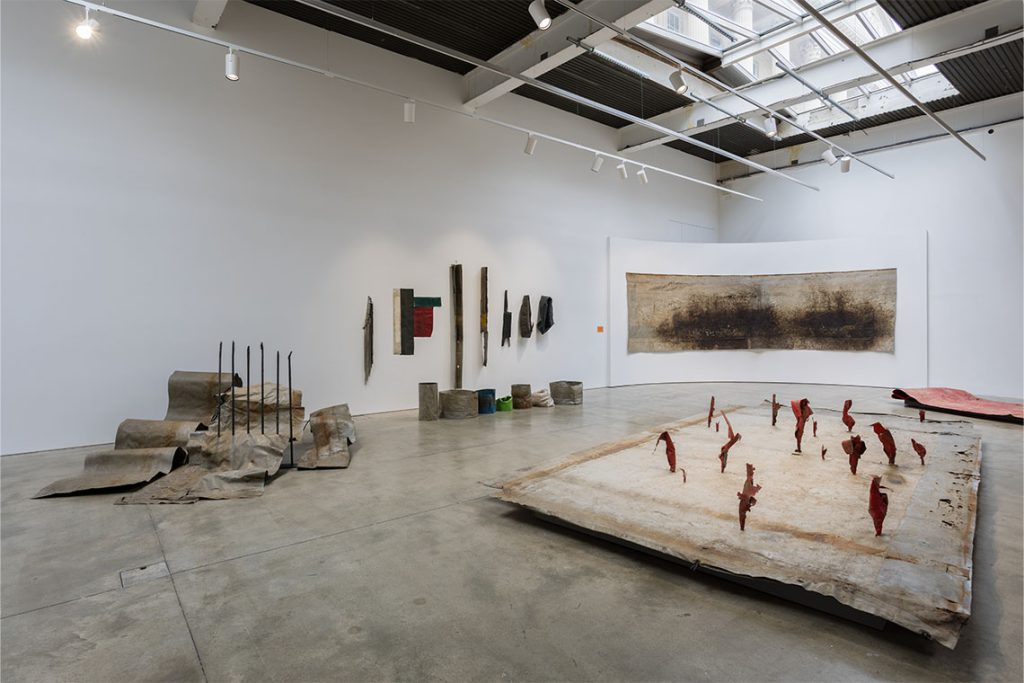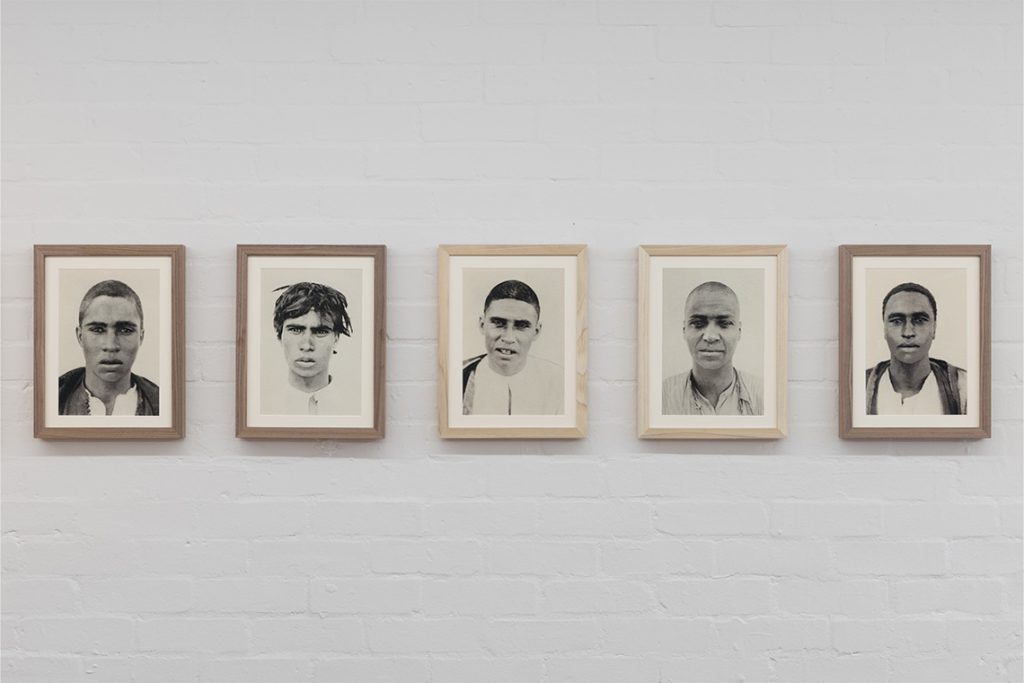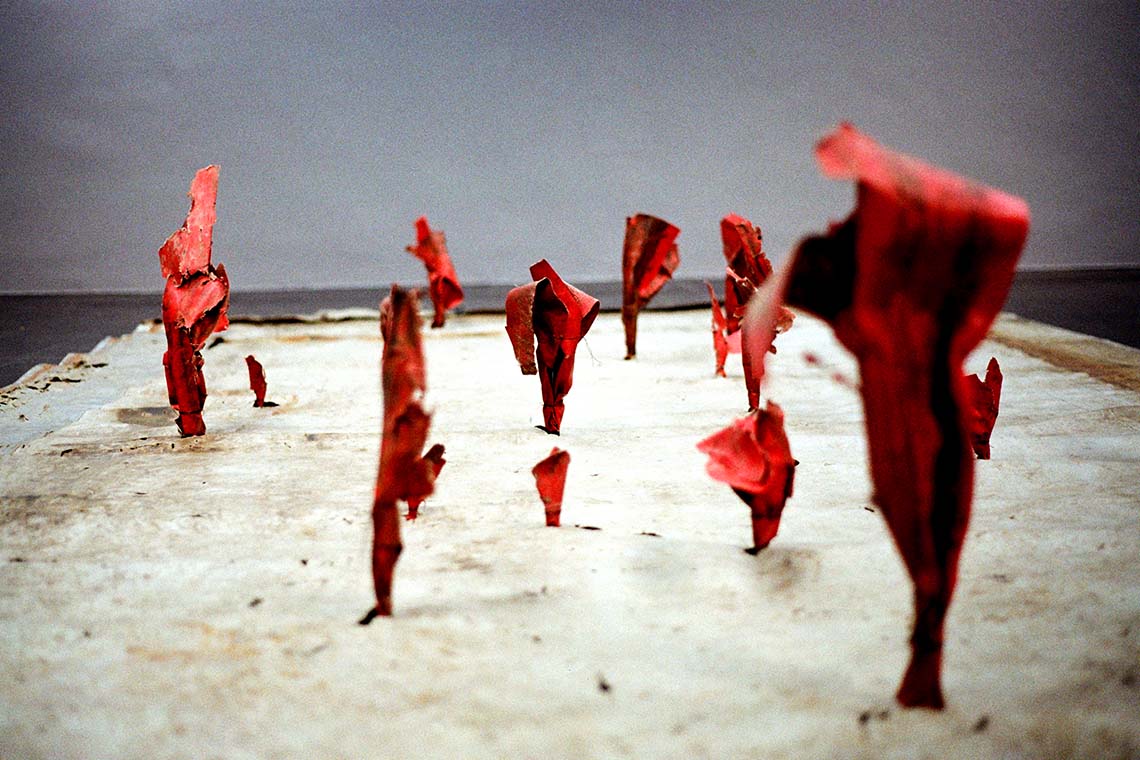The Baghdad-born, Berlin-based artist’s latest solo show comprises two rooms that form a model of artistic and political resistance in Iraq and the wider region.
The Institute of Contemporary Art’s (ICA) summer show this year is Rheim Alkadhi’s Templates for Liberation, the artist’s first time exhibiting in the UK. Her work is heavily invested in the SWANA region and migration, filtered through the lenses of colonialism, feminism and environmentalism. Alkadhi grew up in Baghdad and is currently based in Berlin, with the field research for her projects spanning Palestine, Lebanon, Iraq, Jordan and Morocco, as well as some European countries. Templates for Liberation focuses primarily on Iraq, the country of her childhood. It consists of two rooms, the first containing several works made from tarpaulin, and the second being a reading room and counter-archive. The juxtaposition of the two rooms echoes a larger contrast between the quiet, seething radicalism of Alkadhi’s subject matter against the absolute bastions of British imperialism just outside the door in London’s Westminster. Ongoing protests for Palestinian liberation pass this route frequently, the ICA itself offering a point of pause and a drink of water for protestors. Meanwhile, on the day I visit I see that, as ever, Buckingham Palace is swarming with tourists taking selfies outside its forbidding gates.

In the exhibition’s first room are a variety of large sculptural installations fashioned out of tarps made from petroleum-based PVC and taken from industrial transport vehicles. The material itself is a metaphor. The heavy-duty truck tarps once sheltered bodies and objects transported across borders, an activity mandated by a corporation or dominant power, and carry the literal wear-and-tear of these migrations, while also implicating the ways in which global capital fuels such activity. The depressing indestructibility of plastic as a material further symbolises how we plunder Earth and each other for hollow and often ephemeral gain, while the plastic itself outlives us all. The tarps can only be made if crude oil, of which Iraq is the world’s fifth largest producer, is obtained and refined. Ecocriticism therefore joins hands with anti-imperialism in Alkadhi’s structures, which are pointedly literal in their complaint yet formally quite abstract. The material red eruptions from a floor-based work, entitled Harvest of Flames (2019), could be the flares from an oil refinery but when I walk around it, from another angle I see scarlet birds.
My favourite work in this room is undoubtedly For the Oppressed to Narrate the Crimes of their Oppressors (Devastation Panorama) (2024), an enormous piece of tarpaulin slung right across a wall. It looks like a powerful painting, like nifty, intelligent brushwork that should go in a textbook. I stand and stare at it for a while, realising it reminds me of Picasso’s Guernica, which fascinatingly fails in front of Alkadhi’s work at this moment, feeling too stylised or even cartoonish. Something about the tarp feels so true it is brutal, yet utterly beautiful. The material is speckled with tar, like explosions on a canvas, and it is stained and soiled, scratched, dirty and mottled. It is as if a whole battle has been played out on this single tarp and we are now left with the documentation.

Documentation is exactly what I find in Templates for Liberation’s second room, entitled The Land and the People. A long table with benches is placed in the centre for viewers to sit down and read files of papers in front of them. I open one: Draft Mandates for Mesopotamia and Palestine as Submitted for the Approval of the League of Nations. They are archival documents from the National Archives of the UK: British decisions that mandated fate. Pages and pages of other proof – and it is important to call them “proof” – are available to read. There is no jury here and no case to try; the damage lives around us, hanging in the air, continuing to stain tarps. The reading room is further furnished with vitrines containing excerpts from American publications such as Henry Field’s Anthropology of Iraq (2005). These reflect poisons within the colonially originating field, discussing the apportioning of Iraqi land while classifying, categorising and – thus dividing and subjugating – Iraqi people according to British and American interests. Again, the text is brutal in its truth but, unlike the tarps, there is nothing beautiful here.
Across from these texts is a series of digitally rendered photographs – Transynchronic Rebel Portraits (2024) – of Iraqi counter-revolutionaries. These black-and-white portraits are tender; yet they are not real and are more generous than the realities written elsewhere in the room. Alkadhi also adds other photographs of rebels, many of whom do not confine to the gender binary, and supplements them with lyrical and intimate texts written as if from their POV: In this wasted zone we survive by continuous acts of repair, and retribution. This final element of the room, one of speculative fiction that carries the resistant hope and perseverance of books that imagine and construct entire worlds differently for collective betterment, leads us back to the word ‘template’. A template is not a mandate; it is a proposal. It is an act of powerful reimagination against the crude, corrupt decision-making that has long disfigured our planet. Alkadhi’s show joins others, like the Murtaza Vali-curated 2022 Jameel Arts Centre exhibition Proposals for a Memorial to Partition for instance, that are doing the work of both documenting what once happened and dreaming up what could be in the future.



